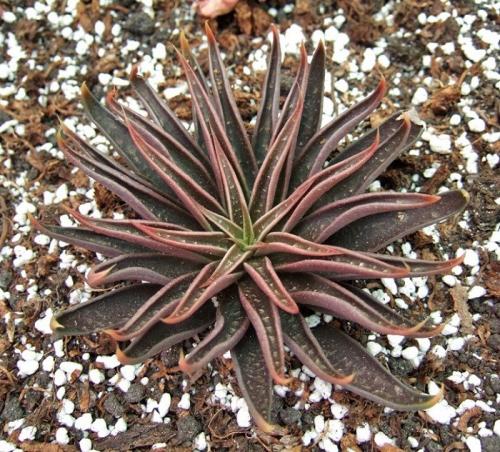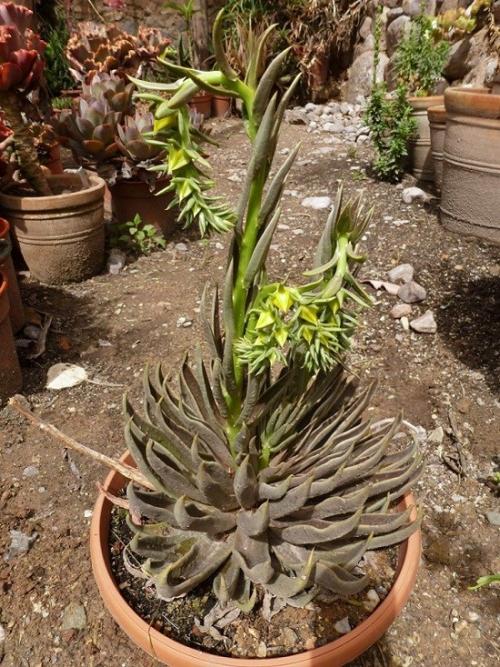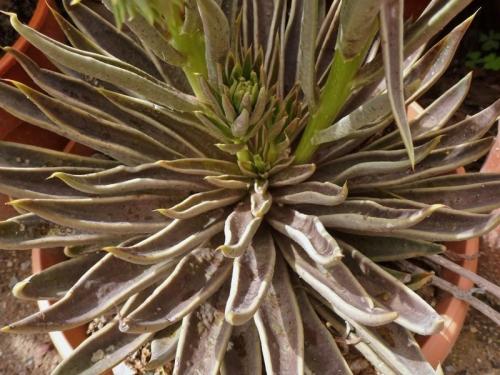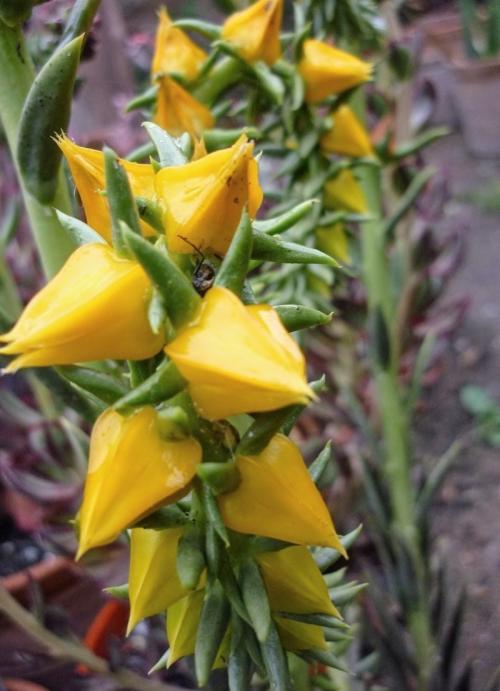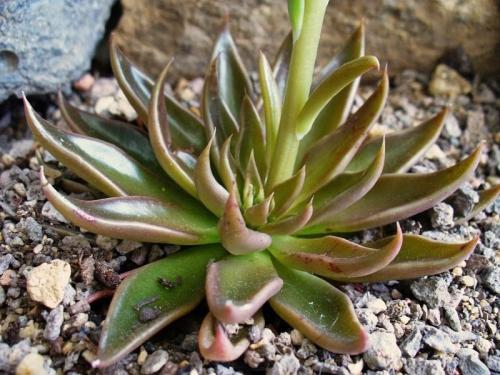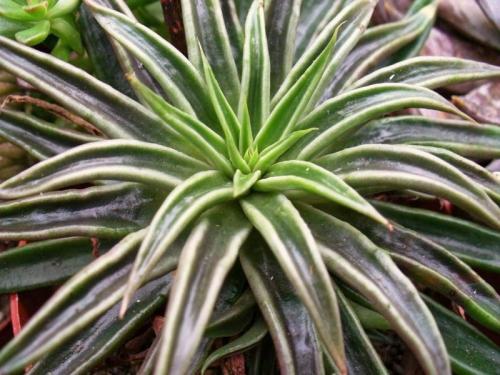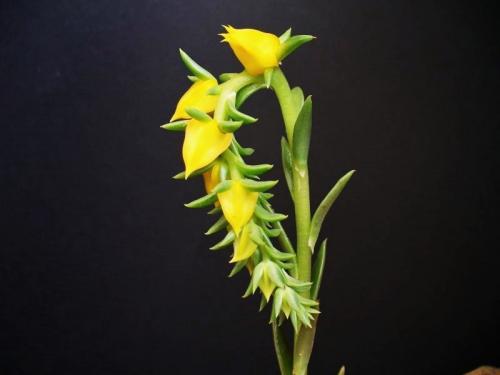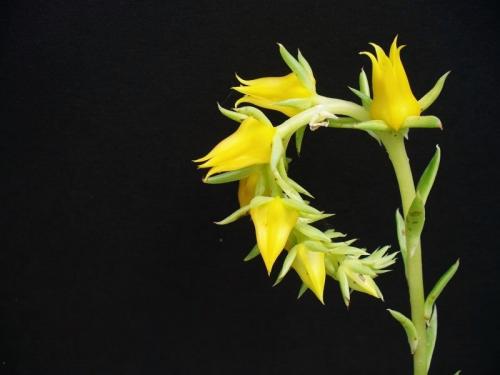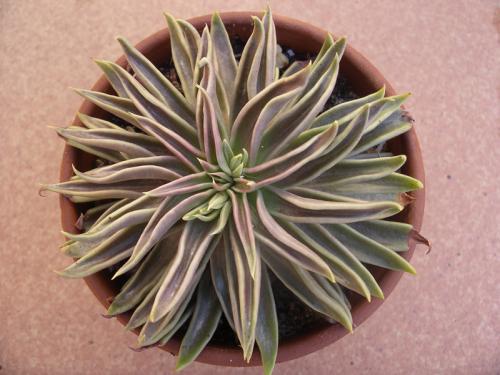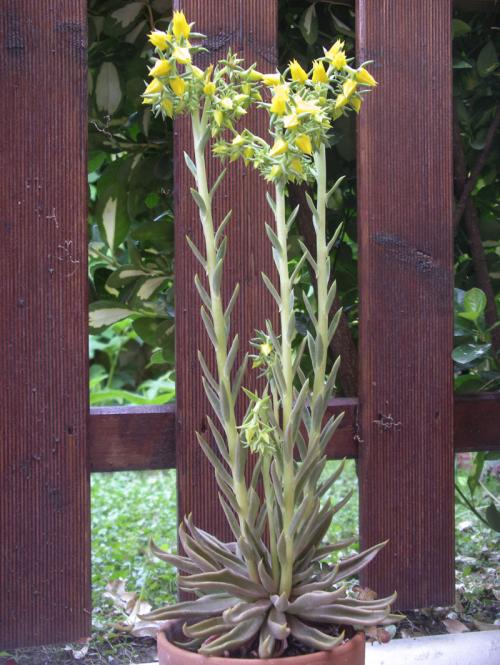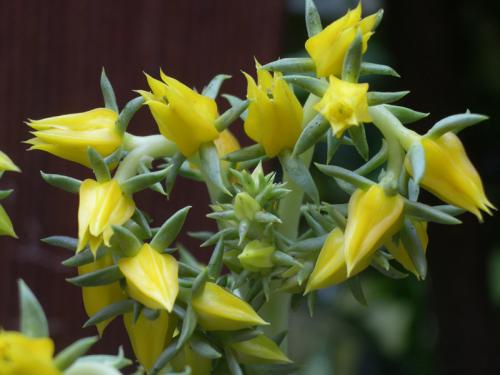LUTEA Rose, 1911
Synonym : Echeveria lutea var. fuscata E.Walther (1972) - see Note below
Series Angulatae
Type : C.A.Purpus 800, collected at San Rafael (or Minas de San Rafael), San Luis Potosí, Mexico, Nov. 1910 (US 619743).
Etymology : Lat. ‘luteus’ = yellow : For the flower colour.
Distribution : Mexico (San Luis Potosí)
First Description by Rose in Journal of the Washington Academy of Sciences 1: 268. 1911 :
Basal leaves numerous, ascending, thickish, 8 to 10 cm. long, light green, glabrous with upturned margins forming a deep trough, acuminate with mucronate tip, the apical portion upturned like a horn.
Flowering stem 20 to 30 cm. long; leaves 4 to 5 cm. long, linear, semiterete, stiff, flattened on the upper surface, pointed, with a toothed free margin at base.
Inflorescence a secund raceme, at first strongly reflexed but at the flowers often becoming erect.
Flowers 20 or more, often subsessile; sepals 5, distinct, very unequal, the longest 2 cm. long, free and toothed at base, linear, pointed, ascending; flower bud strongly 5-angled and pointed; corolla lemon yellow, 15 mm. long, the lobes distinct for about two-thirds their length but not spreading except a little at the tip.
Cytology : n = 12.
Note :
Walther's description of the var. fuscata is a renaming of the plant Reid Moran had collected in the Sierra de Alvarez in San Luis Potosí (M 1338) which had somewhat more brownish leaves but was identified by Moran as E. lutea.His publication is of no relevance whatsoever.
Plants in habitat :
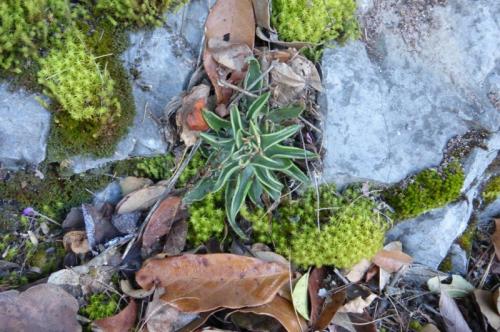
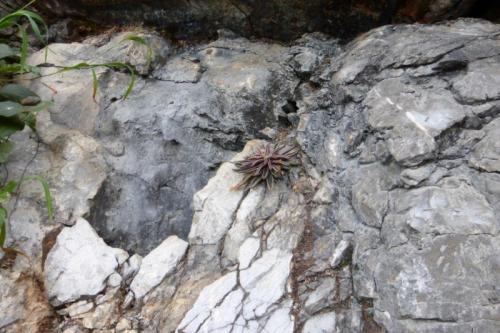

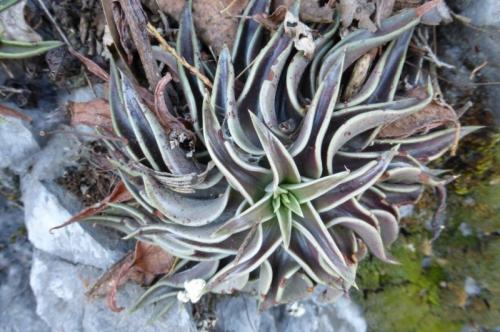
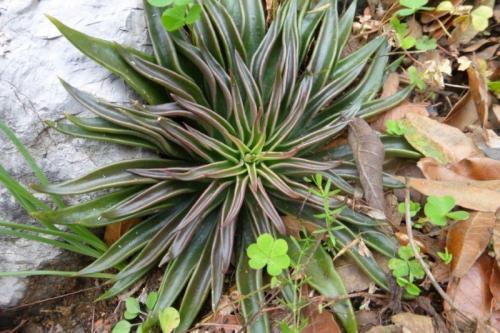
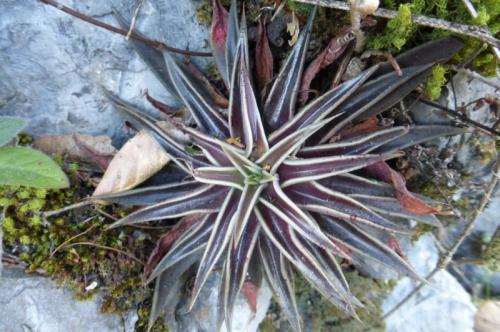
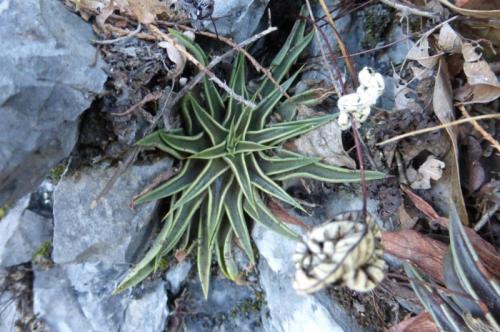
Plants in cultivation :
